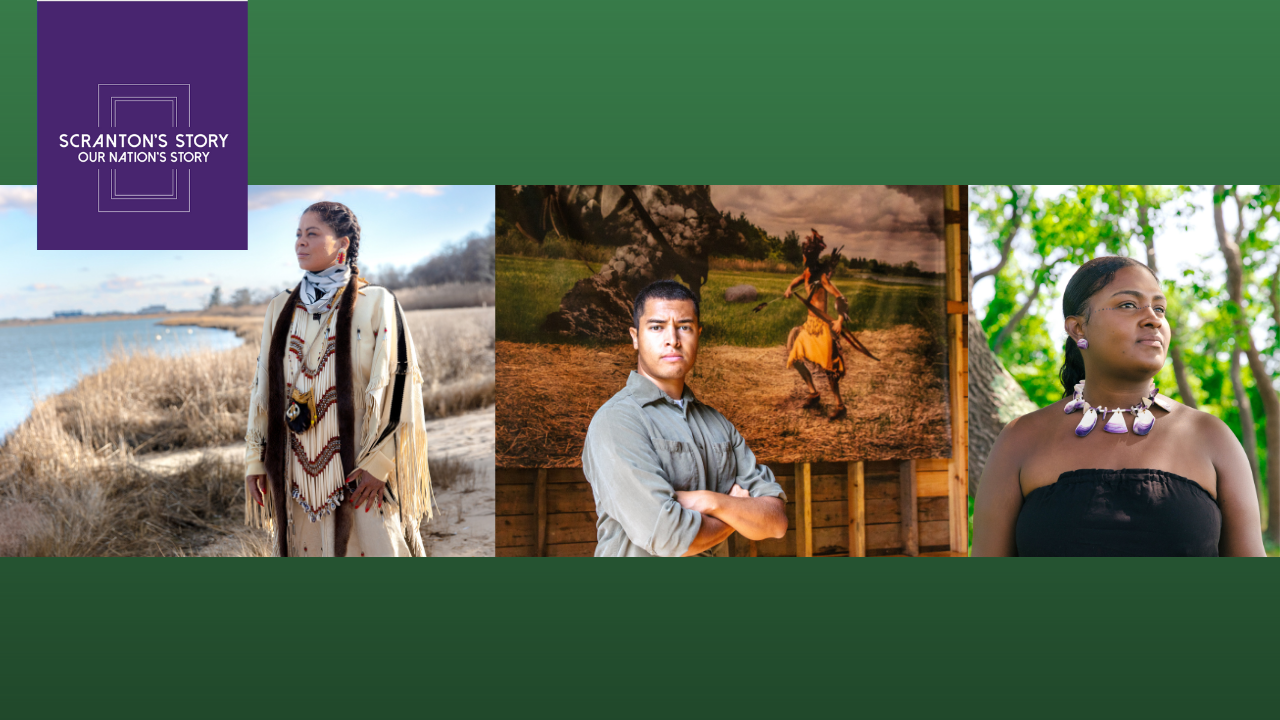March 28 Artist Lecture to Explore Indigenous Identity

On Monday, Mar. 28 at 5 p.m., The University of Scranton’s Hope Horn Gallery is hosting an artist lecture “Mapping Shinnecock: Exploring Indigenous Identity, Culture, and Assimilation” featuring photographer Jeremy Dennis. Dennis is a tribal member of the Shinnecock Indian Nation living and working on the Shinnecock Reservation in Southampton, New York. In his talk, Dennis will explore issues of identity, culture, and assimilation, and how these manifest within his work. Registration for this Zoom event is required here.
His current exhibition at the Hope Horn Gallery, "Mapping Shinnecock: Sites and Portraits. Photographs by Jeremy Dennis" will be presented through April 29, 2022. The exhibition features a selection of images from the online projects "On this Site" and "The Shinnecock Portrait Project" which Dennis has developed over the past few years. In this exhibition, Dennis’s photographs will be on display in the gallery and there are additional project websites that also include interactive components such as Google Street views and recorded interviews that add to interpretations of the works. For more information about Dennis and the supporting interconnected websites, please visit the Hope Horn Gallery’s event page.
Artist Jeremy Dennis has explained his work as “a means of examining my identity and the identity of my community, specifically the unique experience of living on a sovereign Indian reservation and the problems we face...As racial divisions and tensions reach a nationwide fever pitch, it’s more important to me than ever to offer a complex and compelling representation of Indigenous people.”
In addition to his work as an artist, Dennis is also the founder and leader of Ma’s House & BIPOC Art Studio Inc., a project started in June 2020 to create a communal art space based on the Shinnecock Indian Reservation in Southampton, New York. The family house, built in the 1960s, features a residency program for Black, Indigenous, and People of Color (BIPOC), art studio, library, along with hosting an array of art and history-based programs for tribe members and the broader local community.
On Friday, April 1 from 5 – 9 p.m., the Hope Horn Gallery will be open for visits to the "Mapping Shinnecock. Sites And Portraits. Photographs By Jeremy Dennis" exhibition as a part of this April’s First Friday Scranton. Light refreshments will be available. Additional visits to this exhibition are available by appointment now through April 29, 2022, by emailing darlene.miller-lanning@scranton.edu.
This lecture is offered in conjunction with the" Scranton's Story, Our Nation's Story" project's third theme, Indigenous History of Northeastern Pennsylvania. While the Shinnecock Nation is based in Long Island, New York, and not local to NEPA, this exhibit and lecture will address broader issues related to understanding historical and contemporary representations of Indigenous cultures.
Additional events in the “Indigenous History of Northeastern Pennsylvania” theme will include humanities lectures and a community visit by a Delaware/Lenape leader. On Wednesday, May 11, scholar Nicole Eustace, professor of history at New York University, will present “‘Murder and Merc’”: A Colonial Encounter in the Susquehanna Valley” and the following week on Wednesday, May 18, Samantha Seeley, associate professor of history at the University of Richmond, will present “Removal and the Right to Remain in the Early United States.” In November 2022, there will be a visit and presentation by Curtis Zunigha, an enrolled member of the Delaware Tribe of Indians (Oklahoma); the Delaware/Lenape people are among the original inhabitants of what is today Northeastern Pennsylvania, a region that is part of their traditional and ancestral homeland. Zunigha is an expert on Delaware/Lenape culture, language and traditional practices and co-director of the Lenape Center based in New York City.
For more information on all events and the “Scranton’s Story, Our Nation’s Story” project, please visit scranton.edu/scrantonstory.
Follow “Scranton’s Story, Our Nation’s Story” on Facebook and Instagram @ourscrantonstory and on Twitter @scrantonstory.
This project has been made possible in part by the National Endowment for the Humanities: Democracy demands wisdom. Any views, findings, conclusions, or recommendations expressed in these events do not necessarily represent those of the National Endowment for the Humanities.






